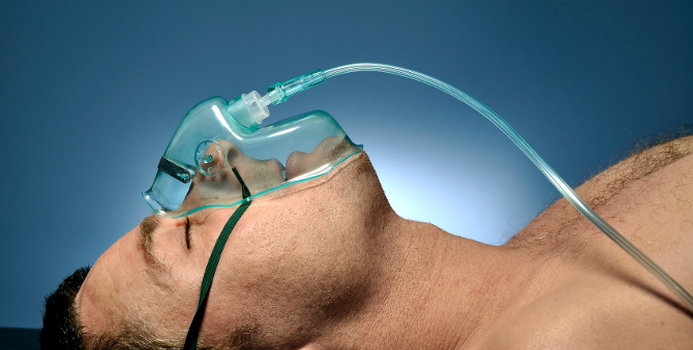When you exercise, your body uses a lot of oxygen. This is one of the reasons that you breathe so heavily during exercise. Because so many of your muscles are working together during a workout, your body needs to transport oxygen to all of them to make sure that they can continue to move properly. Without oxygen, they will fatigue quickly and eventually force you to stop to catch your breath. Oxygen debt helps your muscles to keep going during a workout. While you will have to pay your oxygen debt back later, it's effective at enabling you to push your body during cardio workouts. Here is how oxygen debt works.
How Oxygen Debt WorksYour body uses red blood cells to transport oxygen to all of the different muscles that have to work together during a cardio workout. A lot of oxygen is pumped to your legs and arms to keep you moving. However, at some point, your body is physically taking in less oxygen than it needs to keep you going. At times, this can force you to stop exercising. More often that not, your body goes through a process whereby it releases lactic acid into your muscles to allow them to keep going. During this time, your muscles are not receiving enough oxygen.
Once you finish working out and your muscles are no longer being used, oxygen debt requires you to continue to feed your body oxygen. Extra oxygen is required to help break down the lactic acid. This is one reason you should also stretch immediately after a workout. Stretching allows your muscles to release lactic acid and helps get oxygen back to them more quickly. It also replenishes the oxygen that you use from other systems of the body. Paying back your oxygen debt essentially helps your body to return to its normal state and helps your muscles begin to heal for your next workout.
How Long It Takes to Repay Oxygen DebtDepending on your sex, your age and your size, you may need a lot more oxygen than another person. However, oxygen debt is something that you probably go through after exercise regardless of any of these factors. If you exercise for a short amount of time, it may take your body just a few hours to go through the oxygen debt process and regain all the oxygen that it needs. However, if you run a marathon or just complete a marathon workout, paying back your oxygen debt can take several days. In addition to oxygen debt, your body also has to replenish the glycogen that it uses during a workout.
The key to repaying oxygen debt is to give your body time to heal naturally. You should also be mindful of oxygen debt when you exercise so that you don't overwork yourself and cause damage to your body.



